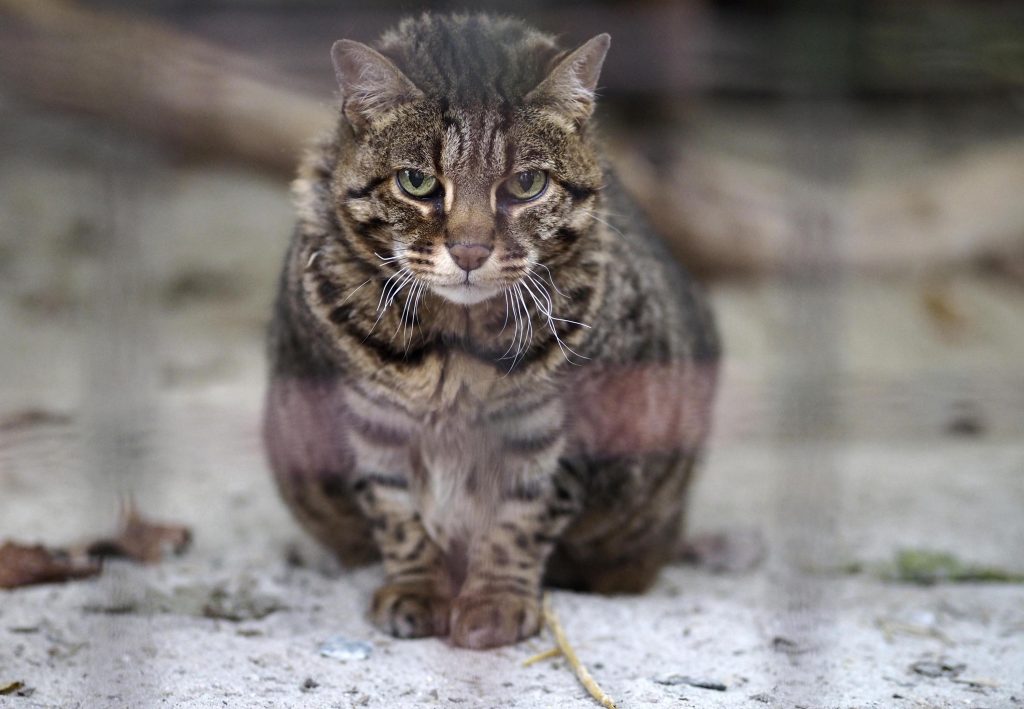The Territorial Behavior in Cats: Understanding Their Instincts and Reactions

Understanding Feline Territory Dynamics
Cats, often celebrated for their enigmatic and solitary demeanor, display a complex network of behaviors that are deeply ingrained in their instincts. Territorial behavior is a central aspect of feline life, influencing their daily habits and interactions. By comprehending these instincts, cat owners can create environments that respect their animals’ needs while fostering a deeper connection with them.
What Drives Territorial Behavior?
The roots of territoriality in cats can be traced back to their wild ancestors, who relied on established borders for survival. Several key motivators drive these behaviors:
- Resource protection: In the wild, resources such as food, water, and shelter are often scarce. Domestic cats, though they receive regular meals from their owners, still possess an instinctual drive to protect these resources, making them more possessive of food and favored resting spots.
- Safe mating areas: During mating season, cats seek places that offer safety and security to breed. Male cats, in particular, may mark territories to attract females while simultaneously warding off other males.
- Predator avoidance: A clearly defined territory allows cats to cultivate an awareness of potential dangers. By becoming familiar with their surroundings, they can minimize risks of predation or encounters with aggressive animals.
Recognizing Feline Territorial Behavior
Awareness of your cat’s territorial behaviors can help you better manage their environment and interactions with others. Common signs of territoriality include:
- Marking: Cats often use scratching and rubbing their scent glands against various surfaces to stake their claims. You may notice your cat scratching furniture or rubbing against walls as a way of leaving their scent.
- Vocalizations: Changes in vocal patterns are another indicator. Cats may become more vocal, exhibiting increased meowing, yowling, or growling in the presence of new cats or unfamiliar sounds, signaling their discomfort or assertiveness.
- Aggression: If a new animal is introduced or even if a new arrival approaches the home, your cat may exhibit defensive behaviors, including hissing or posturing. Such reactions stem from an instinctual drive to protect their territory.
By observing these signals and understanding the motivations behind them, cat owners can create peaceful living conditions that honor their pets’ natural instincts. Simple actions, such as providing ample hiding places, utilizing vertical space like cat trees, or ensuring a cozy, secure resting area, can significantly alleviate stress. Furthermore, fostering a conducive environment can diminish territorial disputes, leading to a harmonious coexistence.
Ultimately, an informed approach to feline territoriality not only enhances our understanding of these captivating animals but also strengthens the bond we share with our furry companions. Understanding what drives your cat’s behaviors and recognizing the signals they display creates a comprehensive framework for nurturing a healthy relationship.

DISCOVER MORE: Click here to learn effective techniques
The Psychological Underpinnings of Feline Territoriality
To fully grasp the intricacies of territorial behavior in cats, it is crucial to delve into the psychological factors that shape these instincts. Unlike dogs, whose pack mentality often leads to a more communal sense of territory, cats are predominantly solitary hunters. This independence impacts how they perceive and react to their environment. A cat’s territory is not simply a geographical marker; it encapsulates their emotional and psychological well-being.
Formation of a Territory
When establishing their territory, cats engage in a myriad of behaviors that affirm their dominance and secure their claim. These behaviors can be categorized as follows:
- Visual Marking: Cats may create visual markers by scratching surfaces, which not only deposits scent but also leaves visible signs. This is a way for them to communicate their presence to other felines, serving as a deterrent.
- Scent Marking: Cats have scent glands in various parts of their bodies, particularly in their cheeks and paws. By rubbing these areas against furniture, walls, or even other cats, they effectively ‘mark’ their environment. This behavior reinforces their scent trail and establishes a comforting olfactory landscape.
- Auditory Signals: The sounds a cat makes also play a significant role in territorial behavior. Vocalizations can convey a cat’s mood and serve as warnings to potential intruders. Low growls or hisses are common indicators of distress or assertion of dominance.
Through these behaviors, a cat builds familiarity with its territory, allowing it to move confidently within its defined space. The absence of these established boundaries can lead to heightened anxiety and stress for a feline, which may inadvertently result in disruptive behaviors.
The Role of Environmental Factors
Additionally, external factors can significantly influence feline territorial behavior. Cats are highly sensitive to changes in their environment, whether they are related to human activity, the presence of other pets, or even the introduction of new furniture. For instance, the arrival of a new pet can trigger defensive reactions and provoke conflicts as they perceive their territory to be threatened.
Social dynamics play a vital role in this behavior. Cats are known for their cautious demeanor and may respond to changes with aggression or withdrawal. Understanding the social hierarchy amongst your pets can help cat owners mitigate potential skirmishes and foster a peaceful coexistence. This awareness can be vital, especially for multi-cat households where territorial disputes may arise frequently.
In essence, comprehending the psychological and environmental factors influencing territorial behavior lays a foundation for improving interactions with our feline companions. By nurturing a space that respects their instincts, owners can enhance their cat’s overall well-being, transforming their home into a sanctuary suitable for both companionship and contentment.
The Territorial Behavior in Cats: Understanding Their Instincts and Reactions
As we delve deeper into the territorial behavior of cats, it’s crucial to understand the underlying instincts that drive this fascinating aspect of feline behavior. Cats are inherently territorial animals, a trait that can be traced back to their wild ancestors. In their natural habitats, these solitary hunters established large territories that helped them secure food sources and mates. With domestication, this instinct remains, manifesting in the home environment in various forms.
One of the primary ways cats express their territoriality is through marking. They often engage in behaviors such as scratching furniture, rubbing their scent glands against objects, and even urinating to establish their claim over a space. This not only reinforces their territory for themselves but also sends signals to other animals in the vicinity regarding their presence. Understanding this behavior helps in recognizing that such actions are not merely destructive but serve a vital function in a cat’s life.
Another intriguing aspect of territorial behavior is how it influences interactions with other pets and humans. Felines often feel the need to protect their space from perceived intruders, which can lead to aggressive behavior if they feel threatened. This protective nature showcases their instinctual need to defend their territory. To mitigate such instances, owners can create designated areas for their cats, enriching their environment with climbing platforms and hiding spots to alleviate territorial disputes.
Furthermore, environmental factors can greatly affect a cat’s territorial instincts. Cats that live in multi-pet households may display heightened territorial behaviors, particularly if they feel their space is encroached upon. The introduction of new pets or changes in the household can sometimes trigger stress or anxiety in cats, leading to increased territorial aggression. Recognizing these triggers allows pet owners to implement gradual introductions and positive reinforcement to promote a harmonious living environment.
By understanding the nuances of their territorial behaviors, cat owners can better cater to their feline companions’ needs. This not only improves the welfare of the cats but also creates a more peaceful coexistence within the home.
| Category | Benefits |
|---|---|
| Understanding Marking | Recognizing the need to establish territory reduces anxiety and improves behavioral management. |
| Creating Safe Spaces | Providing designated areas helps maintain harmony and reduces territorial disputes among pets. |
This understanding of how territorial behavior influences feline actions and reactions enables pet owners to foster a compassionate and accommodating environment that caters to the instinctual needs of their beloved cats.
FOR MORE TIPS: Click here to enhance your pet’s comfort and safety
The Impact of Consistency and Routine on Territorial Behavior
In the realm of feline territoriality, consistency and routine serve as pivotal elements that can significantly influence a cat’s comfort level within its territory. Cats thrive on predictability, and when their daily lives are disrupted, their instinctual responses to territorial changes can escalate dramatically.
Establishing a Routine
A stable environment fosters a sense of security essential for a cat’s mental health. Owners can enhance this by adhering to a regular schedule that encompasses feeding, playtime, and even litter box maintenance. When these routines are disrupted, such as during moves or renovations, it can cause confusion and stress. For example, if a cat’s feeding time drastically changes, it may resort to marking more territory or exhibiting signs of anxiety, such as excessive grooming or hiding.
Routines also help reinforce established boundaries within the home. Cats often create their own ‘territorial map,’ a mental outline of areas they frequent or avoid. Disruptions due to new furniture or changes in room layouts can confuse this map. Maintaining the layout helps cats retain their sense of ownership and familiarity with their environment.
The Influence of Multi-Owner Households
The effects of territorial behavior also become pronounced in multi-owner households. The dynamics can shift significantly depending on how consistently the owners manage pet interactions and territory. For instance, if multiple people are feeding or playing with the cats, it can blur the lines of territory and hierarchy. Cats may feel competition where there was previously none, leading to disputes over food or resting areas.
Moreover, each cat’s unique personality can add complexity to territorial dynamics. Some cats may be more placid and adaptable, while others are territorial and assertive. Understanding these personality traits is essential for cat owners to prevent territorial aggression and create a harmonious living environment. Owners should consider employing positive reinforcement techniques for sharing resources and encourage behaviors that reduce conflict, such as using separate feeding areas or engaging in interactive play sessions.
Territorial Behavior in the Wild vs. Domestic Settings
When examining cat territorial behavior, it’s fascinating to consider the differences between their wild counterparts and domestic cats. In the wild, cats have distinct territories that they fiercely defend against intruders. This can be attributed to the necessity of securing resources for survival. However, in domestic settings, the presence of food, shelter, and care minimizes the necessity for such aggressive territorial claims. Yet, despite having their physical needs met, domestic cats still exhibit these instinctive behaviors as a means of establishing their claim in their ‘home range.’
This instinctual drive shows how fundamental and deeply ingrained these behaviors are, transcending our attempts to domesticate them into more predictable social structures. For example, the introduction of new pets can incite territorial disputes as cats instinctively act to protect their ‘resource-rich’ area. Being attuned to these behaviors enables owners to provide adequate space and resources, thus promoting tranquility among their pets.
In essence, fostering a stable, consistent environment coupled with an understanding of each cat’s personality can mitigate disputes and create an atmosphere where feline companions feel secure in their territory. The fascinating interplay between instinct and environment continues to shape the rich tapestry of cat behavior for cat owners and enthusiasts alike.
DISCOVER MORE: Click here to learn effective training techniques
Conclusion: Embracing the Intricate Nature of Cat Territorial Behavior
Understanding territorial behavior in cats offers profound insights into their instinctual reactions and interactions both in the wild and domestic environments. As owners, recognizing the significance of a cat’s territory can enhance not just their mental well-being but also mitigate potential behavioral issues that arise from territorial disputes. The interplay of natural instincts and the effects of a stable routine highlight the importance of creating an environment that fosters security and predictability for our feline friends.
It is crucial to remember that each cat possesses a unique personality shaped by its experiences and natural instincts. By paying attention to these traits, owners can tailor their approaches to manage territorial behavior effectively. Incorporating positive reinforcement techniques, maintaining a consistent routine, and ensuring sufficient space and resources are vital strategies to cultivate harmony in multi-owner households.
As the exploration of cat territoriality continues, there remains much more to uncover about these fascinating creatures. Researchers and cat enthusiasts alike are encouraged to delve deeper into the complexities of feline behavior, examining the implications of environmental changes and social dynamics. In doing so, we not only enrich our understanding of cats but also foster more fulfilling relationships with our furry companions. Ultimately, embracing and respecting their territorial instincts can lead to a more peaceful coexistence, reaffirming the deep bond we share with our beloved cats.


